Functional vulnerability of liver macrophages to capsules defines virulence of blood-borne bacteria
- PMID: 35258552
- PMCID: PMC8908791
- DOI: 10.1084/jem.20212032
Functional vulnerability of liver macrophages to capsules defines virulence of blood-borne bacteria
Abstract
Many encapsulated bacteria use capsules to cause invasive diseases. However, it remains largely unknown how the capsules enhance bacterial virulence under in vivo infection conditions. Here we show that the capsules primarily target the liver to enhance bacterial survival at the onset of blood-borne infections. In a mouse sepsis model, the capsules enabled human pathogens Streptococcus pneumoniae and Escherichia coli to circumvent the recognition of liver-resident macrophage Kupffer cells (KCs) in a capsular serotype-dependent manner. In contrast to effective capture of acapsular bacteria by KCs, the encapsulated bacteria are partially (low-virulence types) or completely (high-virulence types) "untouchable" for KCs. We finally identified the asialoglycoprotein receptor (ASGR) as the first known capsule receptor on KCs to recognize the low-virulence serotype-7F and -14 pneumococcal capsules. Our data identify the molecular interplay between the capsules and KCs as a master controller of the fate and virulence of encapsulated bacteria, and suggest that the interplay is targetable for therapeutic control of septic infections.
© 2022 An et al.
Conflict of interest statement
Disclosures: M.R. Oggioni has a PhD student jointly with GSK Vaccines working on the pathogenesis of pneumonia (BBSRC grant BB/S507052/1). No other disclosures were reported.
Figures



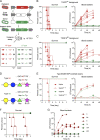
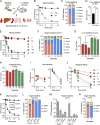






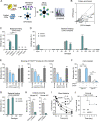
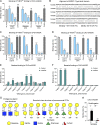

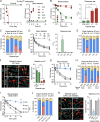
Similar articles
-
Natural antibodies to polysaccharide capsules enable Kupffer cells to capture invading bacteria in the liver sinusoids.J Exp Med. 2025 Feb 3;222(2):e20240735. doi: 10.1084/jem.20240735. Epub 2024 Dec 24. J Exp Med. 2025. PMID: 39718543 Free PMC article.
-
Capsule type defines the capability of Klebsiella pneumoniae in evading Kupffer cell capture in the liver.PLoS Pathog. 2022 Aug 1;18(8):e1010693. doi: 10.1371/journal.ppat.1010693. eCollection 2022 Aug. PLoS Pathog. 2022. PMID: 35914009 Free PMC article.
-
Capsule Promotes Intracellular Survival and Vascular Endothelial Cell Translocation during Invasive Pneumococcal Disease.mBio. 2021 Oct 26;12(5):e0251621. doi: 10.1128/mBio.02516-21. Epub 2021 Oct 12. mBio. 2021. PMID: 34634940 Free PMC article.
-
Pneumococcal virulence factors and host immune responses to them.Eur J Clin Microbiol Infect Dis. 1995 Jun;14(6):479-90. doi: 10.1007/BF02113425. Eur J Clin Microbiol Infect Dis. 1995. PMID: 7588820 Review.
-
Pneumococcal Capsules and Their Types: Past, Present, and Future.Clin Microbiol Rev. 2015 Jul;28(3):871-99. doi: 10.1128/CMR.00024-15. Clin Microbiol Rev. 2015. PMID: 26085553 Free PMC article. Review.
Cited by
-
AI-2 quorum sensing-induced galactose metabolism activation in Streptococcus suis enhances capsular polysaccharide-associated virulence.Vet Res. 2024 Jun 17;55(1):80. doi: 10.1186/s13567-024-01335-5. Vet Res. 2024. PMID: 38886823 Free PMC article.
-
Natural antibodies to polysaccharide capsules enable Kupffer cells to capture invading bacteria in the liver sinusoids.J Exp Med. 2025 Feb 3;222(2):e20240735. doi: 10.1084/jem.20240735. Epub 2024 Dec 24. J Exp Med. 2025. PMID: 39718543 Free PMC article.
-
Novel manufacturing process of pneumococcal capsular polysaccharides using advanced sterilization methods.Front Bioeng Biotechnol. 2024 Aug 7;12:1451881. doi: 10.3389/fbioe.2024.1451881. eCollection 2024. Front Bioeng Biotechnol. 2024. PMID: 39170064 Free PMC article.
-
Pneumococcal capsule expression is controlled through a conserved, distal cis-regulatory element during infection.PLoS Pathog. 2023 Jan 31;19(1):e1011035. doi: 10.1371/journal.ppat.1011035. eCollection 2023 Jan. PLoS Pathog. 2023. PMID: 36719895 Free PMC article.
-
Rewiring the pneumococcal capsule pathway for investigating glycosyltransferase specificity and genetic glycoengineering.Sci Adv. 2023 Sep 8;9(36):eadi8157. doi: 10.1126/sciadv.adi8157. Epub 2023 Sep 6. Sci Adv. 2023. PMID: 37672581 Free PMC article.
References
-
- Aoyagi, Y., Adderson E.E., Min J.G., Matsushita M., Fujita T., Takahashi S., Okuwaki Y., and Bohnsack J.F.. 2005. Role of L-ficolin/mannose-binding lectin-associated serine protease complexes in the opsonophagocytosis of type III group B streptococci. J. Immunol. 174:418–425. 10.4049/jimmunol.174.1.418 - DOI - PubMed
-
- Aoyagi, Y., Adderson E.E., Rubens C.E., Bohnsack J.F., Min J.G., Matsushita M., Fujita T., Okuwaki Y., and Takahashi S.. 2008. L-Ficolin/Mannose-binding lectin-associated serine protease complexes bind to group B streptococci primarily through N-acetylneuraminic acid of capsular polysaccharide and activate the complement pathway. Infect. Immun. 76:179–188. 10.1128/IAI.00837-07 - DOI - PMC - PubMed
-
- Arshad, M., Goller C.C., Pilla D., Schoenen F.J., and Seed P.C.. 2016. Threading the needle: Small-molecule targeting of a xenobiotic receptor to ablate Escherichia coli polysaccharide capsule expression without altering antibiotic resistance. J. Infect. Dis. 213:1330–1339. 10.1093/infdis/jiv584 - DOI - PMC - PubMed
-
- Avery, O.T., Macleod C.M., McCarty M., and Peltier L. 2000. Studies on the chemical nature of the substance inducing transformation of pneumococcal types: Induction of transformation by a desoxyribonucleic acid fraction isolated from pneumococcus type III. J. Exp. Med. 79:137–158. 10.1097/00003086-200010001-00002 - DOI - PMC - PubMed
Publication types
MeSH terms
Substances
LinkOut - more resources
Full Text Sources
Medical
Molecular Biology Databases

